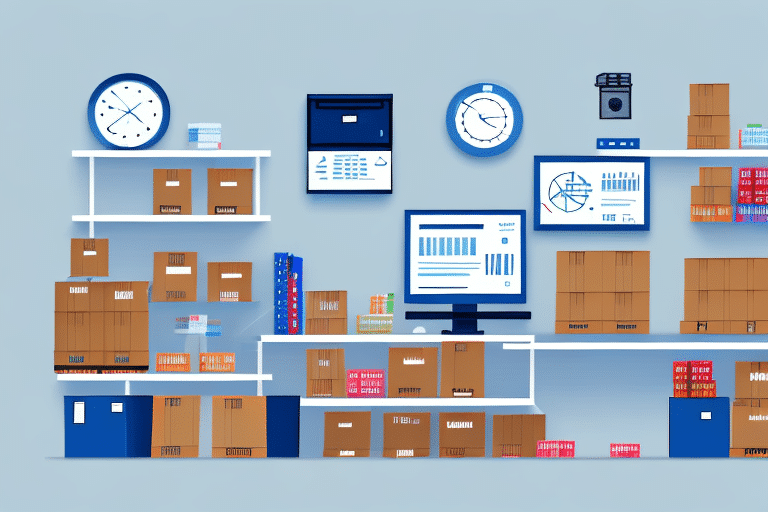A Technical Product Overview of Zoho Inventory: Inventory Management Software for E-Commerce Businesses
Managing inventory efficiently is crucial for the success of any e-commerce business. Relying on spreadsheets can lead to errors, stockouts, and overselling, which may harm your reputation and revenue. Zoho Inventory offers a comprehensive solution tailored for e-commerce businesses, providing robust inventory management features that integrate seamlessly with various sales channels. This overview explores the benefits of Zoho Inventory, detailed setup instructions, comparisons with other tools, and strategies to optimize its use for your business.
Key Features and Benefits of Zoho Inventory
Centralized Inventory Management
Zoho Inventory is a cloud-based platform that consolidates your inventory, sales, and purchase orders into a single system. This centralization helps in reducing manual errors, saving time, and improving overall operational efficiency.
Integration with E-Commerce Platforms
One of Zoho Inventory's standout features is its ability to integrate with major e-commerce platforms such as Shopify, Magento, and WooCommerce. This seamless integration allows you to manage inventory and orders across multiple channels without switching between different systems, thereby avoiding overselling and reducing stockouts.
Real-Time Inventory Tracking
Zoho Inventory provides real-time insights into your inventory levels, sales trends, and order statuses. This real-time tracking enables informed decision-making regarding reordering products, promoting best-sellers, and strategizing sales channels to enhance growth and profitability.
Automated Reordering and Restocking
The software allows you to set automated reorder points based on historical sales data. When inventory levels reach these predefined thresholds, Zoho Inventory automatically generates purchase orders, ensuring you never run out of stock and preventing overstocking.
Advanced Reporting and Analytics
Zoho Inventory offers comprehensive reporting and analytics features. You can track best-selling products, monitor inventory turnover rates, and identify slow-moving items that may require discounts or removal. These insights help optimize your inventory management strategy and business operations.
Setting Up Zoho Inventory for Your E-Commerce Store
Step-by-Step Setup Guide
- Sign Up: Create an account on Zoho Inventory's official website.
- Add Products: Input your product details, including SKUs, descriptions, and pricing.
- Configure Warehouses: Set up your inventory locations and warehouse preferences.
- Integrate E-Commerce Platforms: Connect your chosen e-commerce platforms using API keys.
- Customize Invoices and Orders: Tailor your invoices and sales orders to match your brand identity.
Integrating with E-Commerce Platforms
Integrating Zoho Inventory with platforms like Shopify and Magento involves generating an API key from Zoho and connecting it within your e-commerce platform’s settings. Detailed instructions can be found in the Zoho Inventory Integration Guide.
Managing Warehouses and Order Fulfillment
Multiple Warehouses Management
Zoho Inventory enables you to manage multiple warehouses or fulfillment centers. You can create custom warehouse locations, manage stock transfers between locations, and monitor stock movements in real-time to maintain optimal inventory levels across all sites.
Efficient Order Management
The platform allows bulk creation of orders and invoices, generation of packing lists, and printing of shipping labels. Customizable sales orders and invoices ensure your branding is consistent. Additionally, order statuses can be tracked, and automatic updates can be sent to customers, enhancing the overall customer experience.
Reporting, Analytics, and Insights
Comprehensive Reporting Tools
Zoho Inventory’s reporting tools offer insights into various aspects of your business, including sales performance, inventory turnover, and stock movement. Custom reports and dashboards can be created to focus on metrics that matter most to your business.
Data-Driven Decision Making
Utilizing data and statistics from Zoho Inventory, businesses can forecast sales, plan inventory purchases, and identify trends. This data-driven approach helps in making informed decisions that can significantly improve business performance.
Comparing Zoho Inventory with Other Inventory Management Tools
Zoho Inventory competes with tools like TradeGecko, Stitch Labs, and Fishbowl Inventory. While these alternatives offer similar features such as centralized inventory management and automated restocking, Zoho Inventory distinguishes itself with its real-time sales tracking, seamless integration with a broader range of e-commerce platforms, and user-friendly interface.
Additionally, Zoho Inventory supports multi-currency transactions and the management of international warehouses, making it a suitable choice for businesses with global operations.
Best Practices and Tips for Maximizing Zoho Inventory
- Set Up Automated Reordering: Use historical sales data to configure reorder points, ensuring you maintain optimal inventory levels.
- Utilize the Mobile App: Manage your inventory on-the-go with Zoho Inventory’s mobile application.
- Integrate with Shipping Carriers: Streamline order fulfillment by connecting Zoho Inventory with your preferred shipping carriers.
- Leverage Reporting Features: Regularly review reports and analytics to monitor performance and identify areas for improvement.
- Use Barcode Scanning: Implement barcode scanning to accurately update inventory levels and track product movements efficiently.
Incorporating these tips can enhance the efficiency of your inventory management processes, reduce errors, and save valuable time.
Future Innovations in Zoho Inventory
Zoho Inventory is continually evolving to meet the growing needs of e-commerce businesses. Upcoming innovations include:
- AI-Powered Demand Forecasting: Leveraging artificial intelligence to predict future sales trends and optimize inventory levels.
- Enhanced Integration with Accounting Software: Improved compatibility with accounting platforms like QuickBooks and Xero for streamlined financial management.
- Advanced Analytics Capabilities: Enhanced tools for deeper insights into business performance and inventory metrics.
These innovations aim to make inventory management even more efficient and provide businesses with the tools needed to scale effectively.
Conclusion: Why Zoho Inventory is the Best Choice for Your E-Commerce Business
Zoho Inventory stands out as a robust inventory management solution tailored for e-commerce businesses. Its real-time tracking, automated restocking, and comprehensive order management features streamline operations, reduce errors, and save time. With seamless integrations, advanced reporting, and a user-friendly interface, Zoho Inventory empowers businesses to manage their inventory effectively and focus on growth. Implementing Zoho Inventory can lead to improved efficiency, enhanced customer satisfaction, and increased profitability for your e-commerce venture.




















